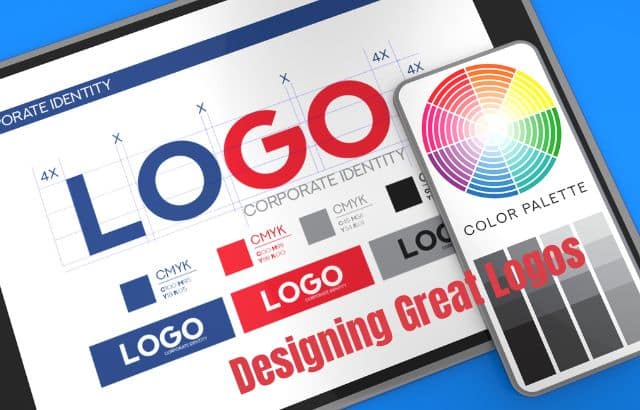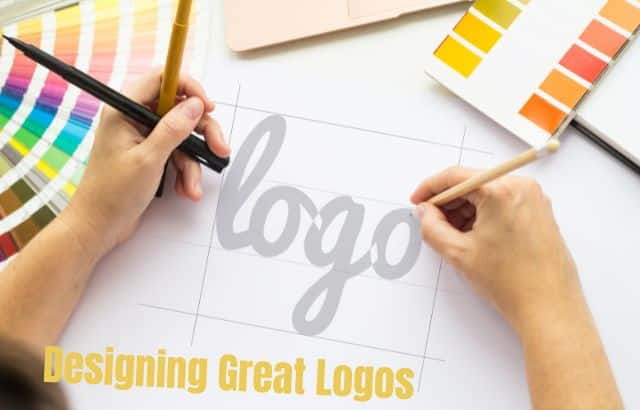According to Business Astrologer and Astro-Strategist Hirav Shah, a good logo can play a crucial role in boosting confidence and creating a strong brand strategy. A logo is not just a graphical representation of a company’s aspirations, but it can also serve as a shield against misfortune and a lucky mascot for success. Logos are not inherently good or bad, but they can be lucky or unlucky. A well-designed logo provides direction, faith, energy, and meaning, and can add value to a brand’s equity.
Table of Contents
What is logo
Astrology and numerology principles can be applied to various aspects of business, including the design of a company’s logo. Hirav Shah, a business astrologer, specializes in helping companies achieve success through strategic planning and decision-making. He understands that a logo is more than just a symbol or design – it represents a brand’s identity and values. By working with Hirav Shah, businesses can ensure that their logo is not only visually appealing but also aligned with their overall goals and objectives. This can help to build brand recognition and loyalty, leading to greater success in the marketplace. These branding strategies are used by most of the Top Automobile Companies all over the world.
However, here are some general guidelines that can be followed when designing logos based on astrology and numerology principles:
- Choose colors and shapes that correspond to the client’s astrological sign. For example, if the client is a Leo, use bright and bold colors like gold and orange, and incorporate shapes like triangles or the sun into the logo.
- Incorporate the client’s birth date or numerology number into the design. For example, if the client’s numerology number is 5, use a design that incorporates the number 5 or features five elements.
- Use symbols or imagery associated with astrology and numerology. For example, incorporate stars or the zodiac signs into the design.
- Consider the meanings associated with different numbers and astrological signs. For example, the number 8 is associated with prosperity and abundance, while the sign of Virgo is associated with precision and attention to detail.
- Keep the design simple and easily recognizable, using shapes and symbols that are clear and unambiguous.
Remember to always work closely with the client to ensure that the logo design accurately reflects their personality, brand, and values.
Designing Logos with Astrology and Numerology Principles
1. Understand the basics of astrology and numerology
Before designing a logo with astrology and numerology principles, it’s important to have a basic understanding of these concepts. Astrology is the study of the movements and relative positions of celestial bodies and their influence on human affairs and natural world. Numerology is the study of the symbolism of numbers and their influence on human life.
2. Choose the right colors
Colors play a significant role in astrology and numerology. Each planet and number is associated with a specific color. For example, the planet Venus is associated with the color green, while the number 7 is associated with purple. Choosing the right colors for your logo can help convey the desired message and align with the principles of astrology and numerology.
3. Incorporate astrological symbols
Astrological symbols can add depth and meaning to your logo. For example, the symbol for the planet Mercury can be incorporated into a logo for a communication or technology company. The symbol for the zodiac sign Leo can be used for a logo for a creative agency.
4. Use numerology to determine the best name for your brand
Numerology can be used to determine the best name for your brand. Each letter of the alphabet is associated with a specific number. By adding up the numbers associated with each letter in your brand name, you can determine the numerological value of your brand. This can help you choose a name that aligns with your desired message and resonates with your target audience.
5. Consider the placement of elements
The placement of elements in your logo can also be influenced by astrology and numerology principles. For example, the number 8 is associated with abundance and prosperity, so incorporating the number 8 in a prominent position in your logo can convey a message of success and abundance.
6. Work with an astrologer or numerologist
If you’re not familiar with astrology or numerology, consider working with an astrologer or numerologist to help you design your logo. They can provide insights and guidance on how to incorporate these principles into your design and ensure that your logo aligns with your desired message and resonates with your target audience.
Infusing Astrology and Numerology into Logo Design:
- Symbolism and Iconography: Incorporate zodiac symbols, planetary glyphs, or astrological elements such as stars, moons, and suns into the logo design to evoke specific astrological themes and energies.
- Color Psychology: Choose colors that resonate with the qualities associated with the brand’s astrological signs or numerological vibrations. For example, fiery reds and oranges may represent passion and energy, while soothing blues and greens can symbolize harmony and balance.
- Typography: Explore typography styles that reflect the brand’s personality and convey its message effectively. Serif fonts may convey a sense of tradition and reliability, while modern sans-serif fonts can evoke innovation and forward-thinking.
- Numerological Analysis: Calculate the numerical value of the brand’s name or key words using numerology principles, and use the resulting numbers to inform design decisions. For instance, if the brand’s name adds up to the number 5, which signifies freedom and versatility, consider incorporating dynamic and flexible design elements.
- Balance and Harmony: Ensure that the overall design maintains balance and harmony, reflecting the alignment of astrological and numerological influences with the brand’s identity and values. Avoid clutter and excessive symbolism that may dilute the logo’s impact.
The Importance of Great Logos:
In today’s competitive marketplace, where brands vie for consumers’ attention in a sea of visual noise, the importance of a great logo cannot be overstated. According to a study conducted by Nielsen, it takes just 10 seconds for consumers to form a first impression of a brand’s logo. Furthermore, research by the Design Management Institute found that companies with strong brand identities outperform their competitors by 20%. These statistics underscore the critical role that logos play in shaping consumers’ perceptions and driving business success.
Case Studies in Logo Design Success
To illustrate the power of great logo design, let’s examine a few notable case studies. The Nike swoosh, for example, is one of the most iconic logos in the world, symbolizing speed, movement, and athleticism. According to Forbes, Nike’s brand value increased by 6% following the launch of the swoosh logo in 1971. Similarly, the Apple logo, with its clean lines and minimalist design, has become synonymous with innovation and quality, contributing to Apple’s status as one of the world’s most valuable brands.
Logo Quotes
“Your logo is the visual shorthand for your brand’s values, culture, and promise. Let it speak volumes about who you are and what you stand for.” – Unknown
Explanation: This quote emphasizes the importance of a logo as a concise representation of a brand’s identity, encapsulating its values, culture, and promise. A well-designed logo communicates essential attributes of the brand, such as its personality, ethos, and positioning, in a visually compelling and memorable way.
Strategy: The strategy here is to create a logo that authentically reflects the brand’s values, culture, and promise. This involves conducting thorough research into the brand’s identity, target audience, and competitive landscape to identify key elements that should be incorporated into the logo design.
Execution: The execution involves designing a logo that effectively communicates the brand’s values, culture, and promise through its visual elements, such as colors, fonts, symbols, and imagery. The logo should evoke the desired emotional response from the audience and resonate with them on a deeper level. Additionally, the logo should be adaptable and versatile enough to be applied across various mediums and platforms while maintaining its integrity and impact.
“A logo is not just a mark; it’s the embodiment of your brand’s essence, distilled into a visual form.” – Unknown
Explanation: This quote highlights the role of a logo as more than just a graphical element; it is a manifestation of the brand’s essence and identity. A logo serves as a symbolic representation of the brand’s values, personality, and unique attributes, encapsulating its essence in a succinct and recognizable form.
Strategy: The strategy is to create a logo that captures the essence of the brand and communicates it effectively to the audience. This involves distilling the brand’s core values, personality traits, and positioning into visual elements that can be incorporated into the logo design.
Execution: The execution entails designing a logo that visually communicates the brand’s essence through its choice of colors, fonts, symbols, and overall design aesthetic. The logo should evoke the desired emotional response from the audience and convey the brand’s identity and values at a glance. It should be memorable, timeless, and versatile enough to adapt to various contexts and applications.
“A logo is the first impression your brand makes. Make it count, make it resonate, make it unforgettable.” – Unknown
Explanation: This quote underscores the importance of a logo as the initial point of contact between a brand and its audience. It emphasizes the need for a logo to make a strong and lasting impression, one that resonates with viewers and leaves a memorable imprint in their minds.
Strategy: The strategy here is to create a logo that makes a positive and impactful first impression on the audience. This involves designing a logo that is visually striking, aesthetically pleasing, and aligned with the brand’s identity and values.
Execution: The execution involves designing a logo that effectively communicates the brand’s identity, personality, and positioning through its visual elements. The logo should be distinctive, memorable, and instantly recognizable, capturing the attention of viewers and leaving a lasting impression. Additionally, the logo should be adaptable enough to be applied across various mediums and platforms, ensuring consistent brand representation.
“Your logo is the cornerstone of your brand identity, anchoring it in the minds of consumers.” – Unknown
Explanation: This quote highlights the foundational role of a logo in establishing and reinforcing a brand’s identity. It emphasizes how a well-designed logo serves as the anchor point for the brand, creating a strong and recognizable visual identity that resonates with consumers.
Strategy: The strategy is to create a logo that serves as the cornerstone of the brand’s identity, anchoring it in the minds of consumers and establishing a strong brand presence. This involves designing a logo that is distinctive, memorable, and aligned with the brand’s values, personality, and positioning.
Execution: The execution involves designing a logo that effectively communicates the brand’s identity and resonates with its target audience. The logo should be visually appealing, aesthetically pleasing, and instantly recognizable, creating a strong association between the brand and its visual identity. Additionally, the logo should be adaptable enough to be applied across various mediums and platforms, ensuring consistent brand representation.
“A logo is the face of your brand, a silent ambassador that speaks volumes about your identity and values.” – Unknown
Explanation: This quote likens a logo to the face of a brand, emphasizing its role as a silent ambassador that communicates the brand’s identity and values to the audience. It underscores how a well-designed logo can convey essential attributes of the brand, such as its personality, ethos, and promise, without saying a word.
Strategy: The strategy here is to create a logo that serves as an effective ambassador for the brand, communicating its identity and values to the audience in a visually compelling and memorable way. This involves designing a logo that is aligned with the brand’s personality, values, and positioning.
Execution: The execution entails designing a logo that effectively communicates the brand’s identity and resonates with its target audience. The logo should be visually appealing, aesthetically pleasing, and instantly recognizable, creating a strong association between the brand and its visual identity. Additionally, the logo should be adaptable enough to be applied across various mediums and platforms, ensuring consistent brand representation.
“Your logo is not just a design; it’s a visual representation of your brand’s promise and personality. Keep it true, keep it memorable.” – Unknown
Explanation: This quote emphasizes the deeper significance of a logo as a visual representation of a brand’s promise and personality. It underscores the importance of maintaining authenticity and memorability in the design of a logo, ensuring that it effectively communicates the brand’s essence to the audience.
Strategy: The strategy is to create a logo that authentically reflects the brand’s promise and personality, conveying its unique attributes and value proposition to the audience. This involves designing a logo that is true to the brand’s identity, values, and positioning.
Execution: The execution involves designing a logo that effectively communicates the brand’s promise and personality through its visual elements. The logo should be distinctive, memorable, and aligned with the brand’s identity, creating a strong and lasting impression on the audience. Additionally, the logo should be adaptable enough to be applied across various mediums and platforms, ensuring consistent brand representation.
“A logo is the embodiment of your brand’s essence, distilled into a visual form.” – Unknown
Explanation: This quote highlights the concept of a logo as the embodiment of a brand’s essence, condensed into a visual representation. It emphasizes how a well-designed logo can capture the core attributes and values of a brand, translating them into a concise and impactful visual form.
Strategy: The strategy here is to create a logo that encapsulates the essence of the brand, distilling its core attributes and values into a visually compelling and memorable design. This involves conducting thorough research into the brand’s identity, values, and target audience to identify key elements that should be incorporated into the logo design.
Execution: The execution entails designing a logo that effectively communicates the brand’s essence through its visual elements. The logo should be visually striking, aesthetically pleasing, and aligned with the brand’s identity and values, creating a strong and lasting impression on the audience. Additionally, the logo should be adaptable enough to be applied across various mediums and platforms, ensuring consistent brand representation.
“A logo is the first impression your brand makes. Make it count, make it resonate, make it unforgettable.” – Unknown
Explanation: This quote underscores the importance of a logo as the initial point of contact between a brand and its audience. It emphasizes the need for a logo to make a strong and lasting impression, one that resonates with viewers and leaves a memorable imprint in their minds.
Strategy: The strategy is to create a logo that makes a positive and impactful first impression on the audience. This involves designing a logo that is visually striking, aesthetically pleasing, and aligned with the brand’s identity and values.
Execution: The execution involves designing a logo that effectively communicates the brand’s identity, personality, and positioning through its visual elements. The logo should be distinctive, memorable, and instantly recognizable, capturing the attention of viewers and leaving a lasting impression. Additionally, the logo should be adaptable enough to be applied across various mediums and platforms, ensuring consistent brand representation.
“Your logo is the cornerstone of your brand identity, anchoring it in the minds of consumers.” – Unknown
Explanation: This quote highlights the foundational role of a logo in establishing and reinforcing a brand’s identity. It emphasizes how a well-designed logo serves as the anchor point for the brand, creating a strong and recognizable visual identity that resonates with consumers.
Strategy: The strategy is to create a logo that serves as the cornerstone of the brand’s identity, anchoring it in the minds of consumers and establishing a strong brand presence. This involves designing a logo that is distinctive, memorable, and aligned with the brand’s values, personality, and positioning.
Execution: The execution involves designing a logo that effectively communicates the brand’s identity and resonates with its target audience. The logo should be visually appealing, aesthetically pleasing, and instantly recognizable, creating a strong association between the brand and its visual identity. Additionally, the logo should be adaptable enough to be applied across various mediums and platforms, ensuring consistent brand representation.
“A logo is the face of your brand, a silent ambassador that speaks volumes about your identity and values.” – Unknown
Explanation: This quote likens a logo to the face of a brand, emphasizing its role as a silent ambassador that communicates the brand’s identity and values to the audience. It underscores how a well-designed logo can convey essential attributes of the brand, such as its personality, ethos, and promise, without saying a word.
Strategy: The strategy here is to create a logo that serves as an effective ambassador for the brand, communicating its identity and values to the audience in a visually compelling and memorable way. This involves designing a logo that is aligned with the brand’s personality, values, and positioning.
Execution: The execution entails designing a logo that effectively communicates the brand’s identity and resonates with its target audience. The logo should be visually appealing, aesthetically pleasing, and instantly recognizable, creating a strong association between the brand and its visual identity. Additionally, the logo should be adaptable enough to be applied across various mediums and platforms, ensuring consistent brand representation.
FAQs on Logo and Branding
Q: How can astrology and numerology enhance the effectiveness of a logo?
A: Astrology and numerology provide additional layers of meaning and resonance to logo designs, tapping into subconscious associations and emotions that can strengthen the brand’s connection with its audience.
Q: Can astrology and numerology be applied to any type of brand or business?
A: Yes, astrology and numerology principles can be adapted to suit a wide range of brands and industries, from corporate logos to personal branding initiatives. The key is to align the symbolism and energies with the brand’s identity and objectives.
Q: Are there any risks or drawbacks to incorporating astrology and numerology into logo design?
A: While astrology and numerology can enrich logo design, it’s essential to ensure that the symbolism and messaging are authentic and relevant to the brand. Avoid clichés and superficial interpretations that may undermine the logo’s credibility and effectiveness.
Final lines


























